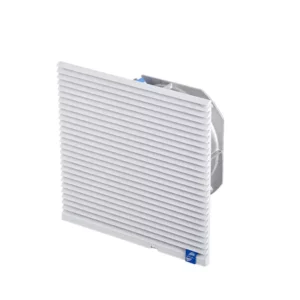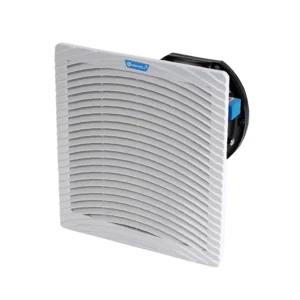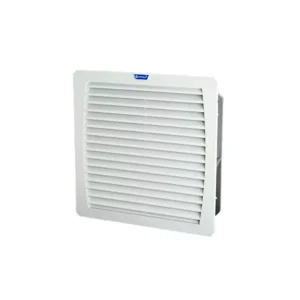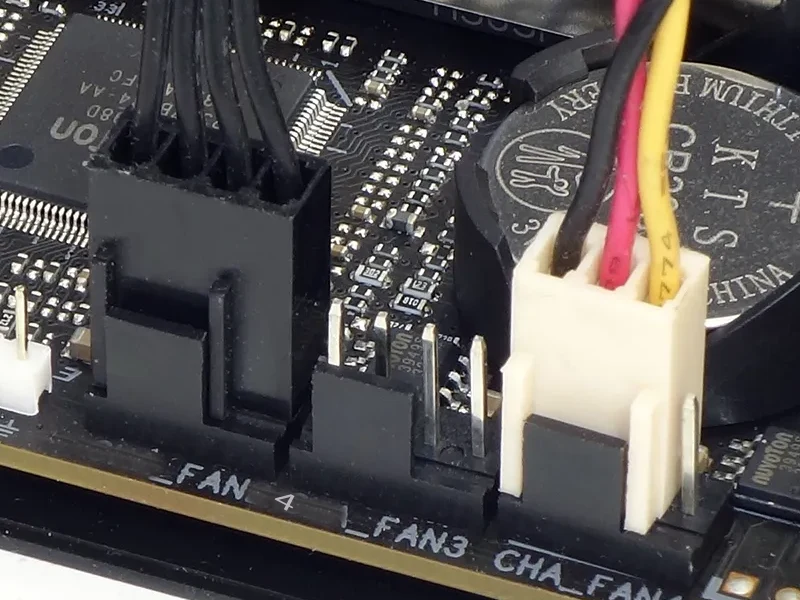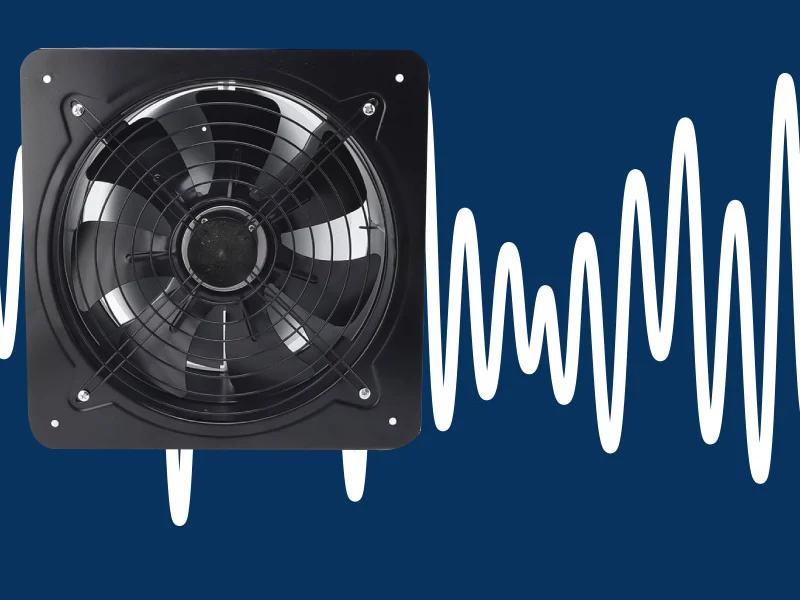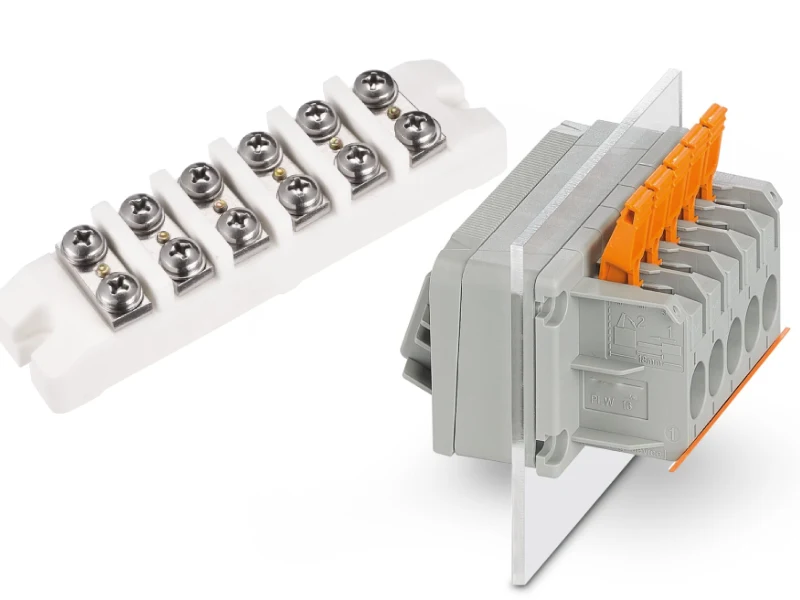Imagine you’re setting up a new control enclosure or upgrading your computer case. You stand at a crossroads: Chassis Fan vs Enclosure Fan. Why does this choice matter? Studies show that 65% of IT equipment failures happen because of poor air movement or cooling in enclosures. The right fan can keep your air flowing smoothly, protect your enclosure, and make your system last longer. Picking the correct air solution impacts the reliability of your enclosure, as fan selection determines how well your air moves and how your enclosure stays cool. Linkwell offers both options so you always have the best fit for your air and enclosure needs.

Key Takeaways
- Choosing the right fan is crucial for preventing equipment failures. A good fan ensures proper air movement, which keeps your system cool and running smoothly.
- Chassis fans are designed for computer cases, focusing on high airflow and low noise. They help cool components like CPUs and GPUs, making them ideal for gaming and data centers.
- Enclosure fans are built for control cabinets and industrial settings. They manage temperature and protect sensitive electronics from heat, dust, and moisture.
- Proper fan placement enhances airflow. Install intake fans low to pull in cool air and exhaust fans high to push out hot air for optimal cooling.
- Always consider airflow requirements, power type, and noise levels when selecting a fan. Matching these factors to your system’s needs ensures effective cooling and longevity.
Quick Definitions
What is a Chassis Fan?
A chassis fan helps you move air inside your computer case. You use it to keep your system cool and running smoothly. When your computer works hard, it creates heat. The chassis fan pulls cooler air from outside and pushes warm air out. This steady flow of air stops your parts from overheating. You often see these fans in desktops, gaming PCs, and even some industrial control boxes. Linkwell’s Computer Chassis Fan stands out because it gives you strong air movement, low noise, and long-lasting performance. You can use it in offices, data centers, or anywhere you need to keep electronics cool. The fan fits easily into most cases and works with many different setups. If you want your computer to last longer and avoid sudden shutdowns, a good chassis fan makes a big difference.
Recommended products
What is an Enclosure Fan?
An enclosure fan is made for cabinets and control panels that hold sensitive electronics. You use this fan to control temperature and protect your equipment. The main job of an enclosure fan is to move air through the cabinet, pushing cooler air in and forcing hot air out. This keeps the inside safe for your devices. Linkwell’s Electrical Enclosure Fan is perfect for telecom boxes, industrial cabinets, and electrical panels. It uses strong materials and weatherproof housing, so you can trust it in tough places. The fan works with filters and even connects to thermostats for smart air control. If you need to keep your equipment safe from heat, dust, and moisture, an enclosure fan is the right choice. You get reliable air movement, less risk of damage, and longer life for your electronics.
Chassis Fan vs Enclosure Fan
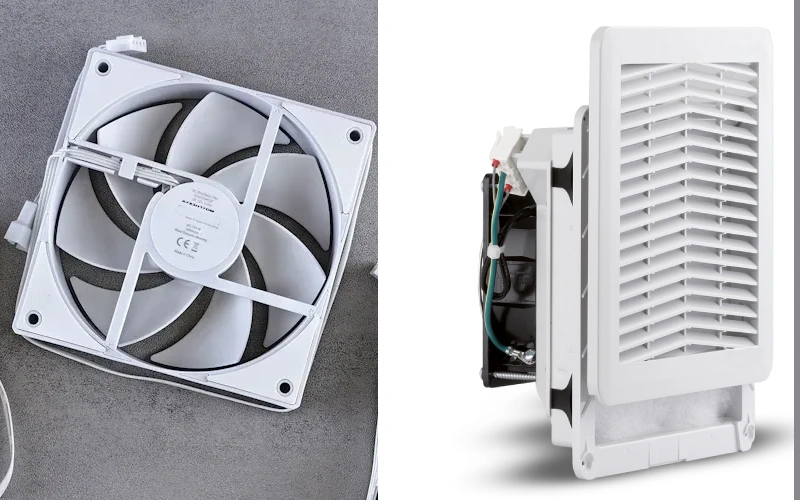
Design Differences
When you compare a chassis fan vs enclosure fan, you notice some clear design differences. A chassis fan usually has a compact, square frame with open blades. This design helps you move air quickly through a computer case. The fan focuses on high airflow and low noise. You often see these fans with features like PWM control, which lets you adjust speed for better air flow and static pressure balance. Linkwell’s Computer Chassis Fan uses thermoplastic PC blades and a robust frame. This gives you strong air flow and static pressure, even in tight spaces.
An enclosure fan, on the other hand, is built for tougher jobs. You find these fans in control cabinets and industrial panels. The design includes weatherproof housing and filter options. This protects your electronics from dust and moisture. The fan often works with thermostats and hygrostats for smart air flow and static pressure control. Linkwell’s Electrical Enclosure Fan stands out with its durable build and energy-efficient motor. It keeps your equipment safe by managing air flow and static pressure, even in harsh environments.
Tip: When you look at the relationship between air flow and static pressure, remember that a chassis fan usually aims for maximum air flow in open spaces, while an enclosure fan balances air flow and static pressure to push air through filters and vents.
Placement and Installation
Getting the placement right makes a big difference in air flow and static pressure. For a chassis fan vs enclosure fan, you need to follow some best practices:
- Place intake fans low in the case or cabinet to pull in cooler air.
- Put exhaust fans high to push out hot air.
- Make sure nothing blocks the air flow path.
- Balance intake and exhaust fans to keep positive pressure and manage dust.
- Avoid putting intake and exhaust fans directly opposite each other.
When you install an enclosure fan, always de-energize the enclosure first. Fit the fan at the bottom for pressurization, and place the exhaust at the top. Check the fan’s operation and air flow direction before you finish. Make sure the thermal design matches the highest ambient temperature. Pick the right NEMA rating for your environment. Leave enough space around air inlets and outlets so you don’t block air flow.
Here’s a quick table to help you see how installation affects air flow and static pressure:
| Evidence Description | Key Point |
|---|---|
| Positive pressure from intake fans helps keep dust out. | Intake fans can improve dust management. |
| Negative pressure from exhaust fans removes hot air effectively. | Exhaust fans enhance thermal management. |
| Airflow direction matters for natural convection. | Fans should be positioned to facilitate airflow. |
| Sealing of the cabinet affects dust intake. | Airtight cabinets benefit from exhaust fans at the top. |
Air Flow and Performance
Air flow and static pressure are the heart of the chassis fan vs enclosure fan debate. Air flow, measured in CFM (cubic feet per minute), tells you how much air the fan moves. A fan rated at 100 CFM can exchange 100 cubic feet of air in one minute. High CFM means better heat removal in ventilated enclosures. You want maximum air flow in open cases, but you need to balance air flow and static pressure in cabinets with filters.
- Air flow rating is measured in CFM.
- CFM shows the volume of air a fan can move, which is key for cooling efficiency.
- Picking the right air flow and static pressure helps you extract heat and keep your electronics safe.
- Higher CFM works best in low resistance spaces like computer cases.
- Good air flow exchanges hot air with cooler air, lowering the temperature inside.
Linkwell’s Computer Chassis Fan delivers maximum air flow for gaming PCs and data centers. You get strong air flow and static pressure, so your system stays cool even under heavy loads. The fan’s advanced design gives you maximum static pressure when you need to push air through tight spaces. Linkwell’s Electrical Enclosure Fan focuses on balancing air flow and static pressure. This helps you move air through filters and vents, keeping your control panels safe from heat and dust.
The relationship between air flow and static pressure matters most when you pick a fan for your setup. If you need maximum air flow, go for a chassis fan. If you need to push air through filters or vents, choose an enclosure fan with higher static pressure. Both fans play a big role in system performance and reliability.
Use Cases for Case Fans and Enclosure Fans

When to Use Case Fans
You want your computer or industrial system to run cool and steady. That’s where case fans come in. These fans keep air moving inside your case, making sure every part gets the right flow. You’ll see the benefits right away:
- Airflow regulation: Case fans pull cool air in and push warm air out. This steady flow stops hot spots from forming.
- Component cooling: They direct air toward your CPU, GPU, and other parts. This keeps temperatures down and performance up.
- Dust management: With filters, case fans help block dust from entering. Less dust means less cleaning and fewer problems.
If you build gaming PCs, workstations, or server racks, you need strong air flow. Linkwell’s Computer Chassis Fan gives you reliable forced air cooling. You get smooth air flow, which means your system stays safe even when you push it hard. When you want to avoid sudden shutdowns or slowdowns, case fans are your best friend.
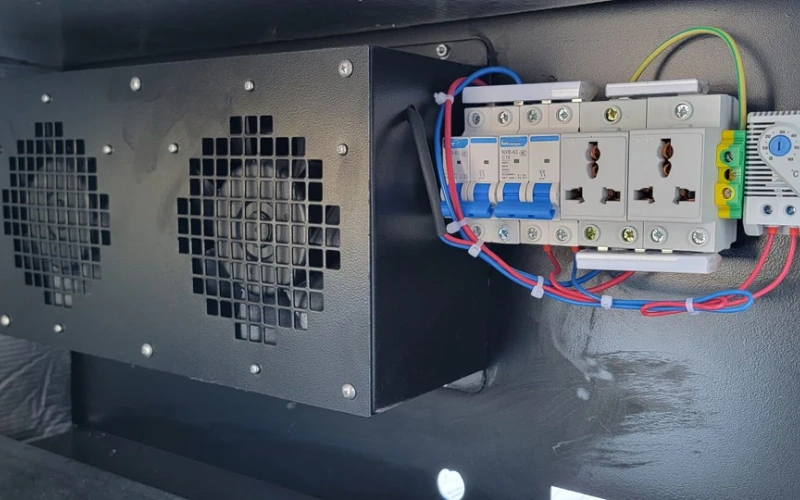
When to Use Enclosure Fans
You might work with control cabinets or telecom boxes. These setups need a different kind of air flow. An enclosure fan keeps the air moving inside, protecting sensitive electronics from heat and moisture. You want an airflow focused enclosure to keep everything running smoothly. Here’s how an enclosure fan helps:
| Benefit | Explanation |
|---|---|
| Regulates internal temperature | The fan keeps the air at the right level, so your components avoid thermal stress. |
| Prevents condensation and corrosion | Good air flow stops moisture from building up, which protects against shorts and failure. |
| Extends lifespan of equipment | Stable air flow inside the enclosure means your gear lasts longer and works better. |
Linkwell’s Electrical Enclosure Fan is perfect for enclosure ventilation. It keeps air moving, balances the flow, and helps you avoid costly repairs. If you need to protect your investment, choose a fan that delivers steady air flow in every condition.
Choosing the Right Fan
Factors to Consider
Picking the right fan for your setup can feel tricky, but you can make it simple by focusing on a few key points. Start by thinking about how much air your system needs to move. If your equipment generates a lot of heat, you need a fan with strong air flow. The right air flow keeps everything cool and prevents hot spots.
Next, check the power type. Some fans run on AC, while others use DC. Make sure your power supply matches the fan you choose. Noise is another big factor. If you work in a quiet office or a noise-sensitive area, look for a fan that runs quietly but still gives you good air flow.
You also want to think about heat dissipation. Ask yourself how much heat your system produces and what the maximum safe temperature is. The fan should keep the temperature below that limit. Placement matters, too. Put the fan where it can move air efficiently and help with dust removal.
Here’s a quick table to help you compare the main factors:
| Factor | Description |
|---|---|
| Airflow Requirements | Figure out how much air you need to move based on heat output. |
| Power Type | Choose between AC or DC, depending on your system. |
| Noise Impact | Decide how much noise you can handle in your space. |
| Heat Dissipation | Make sure the fan can keep temperatures in the safe range. |
| Fan Placement | Place the fan for the best air flow and dust control. |
Don’t forget about the environment. If your enclosure sits in a hot, humid, or dusty place, you need a fan built with tough materials. Some fans use corrosion-resistant parts and can handle high temperatures. Always check if the fan has the right certifications for your industry, like UL, CE, or even ATEX for explosive areas.
Performance metrics help you compare fans, too. Look at airflow (CFM), static pressure, noise levels, power use, and durability. For example, Linkwell’s fans offer high air flow, low noise, and long life. You can trust them in tough conditions, whether you need a computer chassis fan or an electrical enclosure fan.
Tip: Always check the size and mounting options. A 140mm fan won’t fit in a 120mm slot. Make sure your system has enough headers or connectors for all your fans.
Mistakes to Avoid
You want your fan to work perfectly from day one. Here are some common mistakes people make—and how you can dodge them:
- Choosing the wrong fan size or type
Always match the fan’s size, speed, and air flow to your system’s needs. Check if you need a 3-pin or 4-pin connector, and see if your setup uses PWM or DC control. - Ignoring the fan layout
Plan your air flow. Place intake fans at the front or bottom to pull in cool air. Put exhaust fans at the top or rear to push out hot air. This keeps the air moving in the right direction. - Mounting the fan incorrectly
Secure the fan tightly and make sure it faces the right way. If you install it backward, you’ll mess up the air flow and cooling. - Mixing incompatible fans
Don’t mix 3-pin and 4-pin fans on the same header. They might run at full speed or not work right. Also, avoid pushing air from two fans against each other. That can block the flow and reduce cooling. - Forgetting to test the fan
After you install the fan, turn on your system and check the air flow. Use software to monitor fan speed and temperature. Listen for odd noises or vibrations. - Overlooking environmental needs
If your enclosure faces dust, moisture, or chemicals, pick a fan with the right protection. Look for weatherproof housing and filters.
Note: Always read the manual before you start. It helps you avoid wiring mistakes and keeps your fan running safely.
When you follow these steps, you get the best air flow and cooling for your system. Linkwell’s fans come with strong user reviews for reliability and performance. You can find a fan that fits your needs, whether you want quiet operation, high air flow, or smart controls.
You now know the main differences between a chassis fan and an enclosure fan. The right choice depends on how you want air to flow in your system. Check out this quick table to help you decide:
| Fan Type | Flow Direction | Best For | Benefit |
|---|---|---|---|
| Chassis Fan | High flow | Open cases, fast air exchange | Keeps parts cool with strong flow |
| Enclosure Fan | Balanced flow | Cabinets, filtered environments | Protects electronics with steady flow |
Selecting the correct fan boosts system efficiency and reliability. You want the best flow for your setup. Linkwell fans get high marks from customers for quality and support:
- Alex Li: “Strong enclosures, reliable flow, always on time.”
- Karen Müller: “Great temperature control and steady flow.”
You can feel confident making your next choice!
FAQ
What’s the main difference between a chassis fan and an enclosure fan?
You use a chassis fan to cool computer cases. You use an enclosure fan to keep control cabinets or electrical boxes cool. Each one fits a different job and setup.
How do I know which fan size to pick?
Check your case or enclosure for mounting holes or slots. Measure the space. Pick a fan that matches those measurements. Most common sizes are 80mm, 120mm, and 140mm.
Can I use a regular fan in a harsh industrial enclosure?
No, you should not. Industrial enclosures need fans with weatherproof housing and filters. These protect your equipment from dust and moisture.
How often should I clean or replace my fan?
You should check your fan every few months. Clean off dust with compressed air. Replace it if you hear noise or see slow spinning.
Do I need a filter for my enclosure fan?
Yes, if your enclosure sits in a dusty or dirty area. A filter keeps dust out and helps your equipment last longer.

